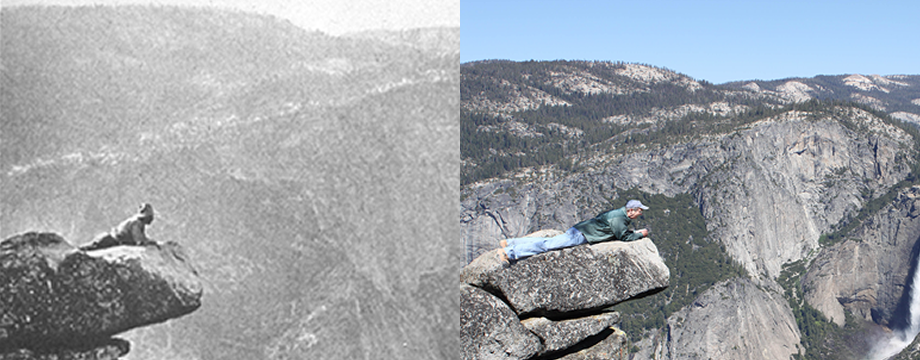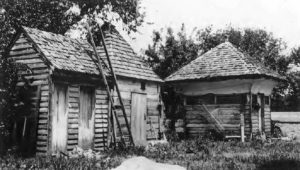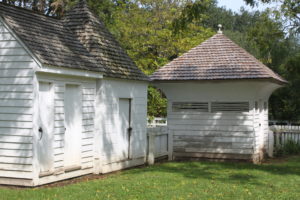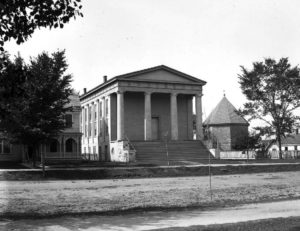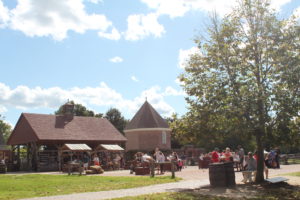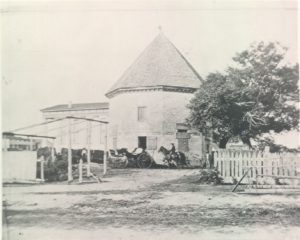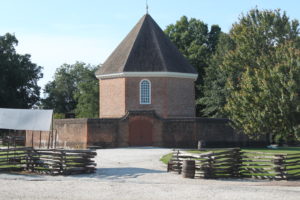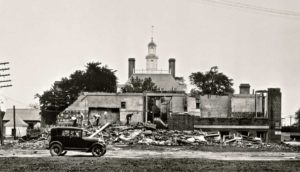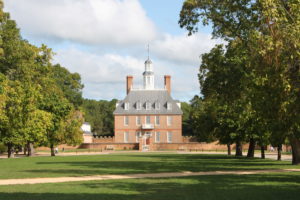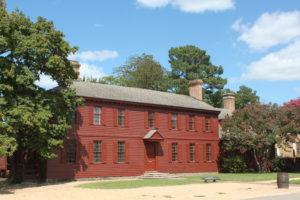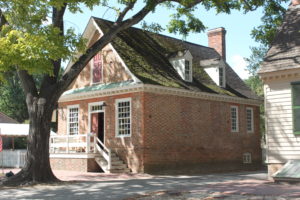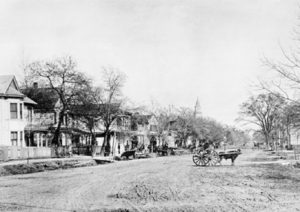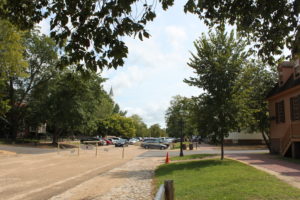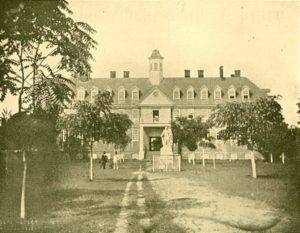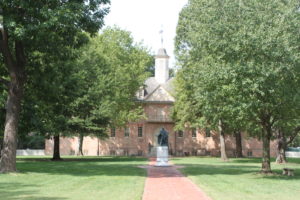Here are three 18th century outbuildings at the Grissell-Hay house. From left to right they are a privy, a smokehouse, and a dairy. Judging by their appearance in this 1920’s photo, work began just in time. Restoration was done using almost all original materials.
Built in 1715, the powder magazine stored arms and ammunition during Colonial times. It was later used for the same purpose by the Confederates during the Civil War. It was also a dancing school, then a livery. The outer wall was demolished in 1856, just before restoration began, to make room for a Greek Revival church, seen in this 1934 photo.
The Governor’s Palace was built in 1706 and burned in 1860. It was rebuilt on the original foundation in 1930 following demolition of a school shown in this photo.
The Payton Randolph house was built in 1716 and was subsequently altered several times. Randolph was Speaker of the House of Burgesses and President of the First Continental Congress. When Randolph died, Thomas Jefferson bought his extensive book collection, which, in turn, was purchased by the government and became the beginning of the Library of Congress. The first photo is dated 1870.
The Prentis store was built in 1739 and is the oldest surviving commercial building in Colonial Williamsburg. It was once used as an auto service station as seen in this 1927 photo.
Here is a view of the Duke of Gloucester Street from the west end taken in the 1890s.
The Wren Building at the College of William and Mary was built in 1697. It is the oldest academic structure in continuous use in America. It had many alterations following severe fires in 1705 and 1859 as well as damage in the Civil War. Here is the earliest known photo of the Wren Building–an 1856 daguerreotype.

